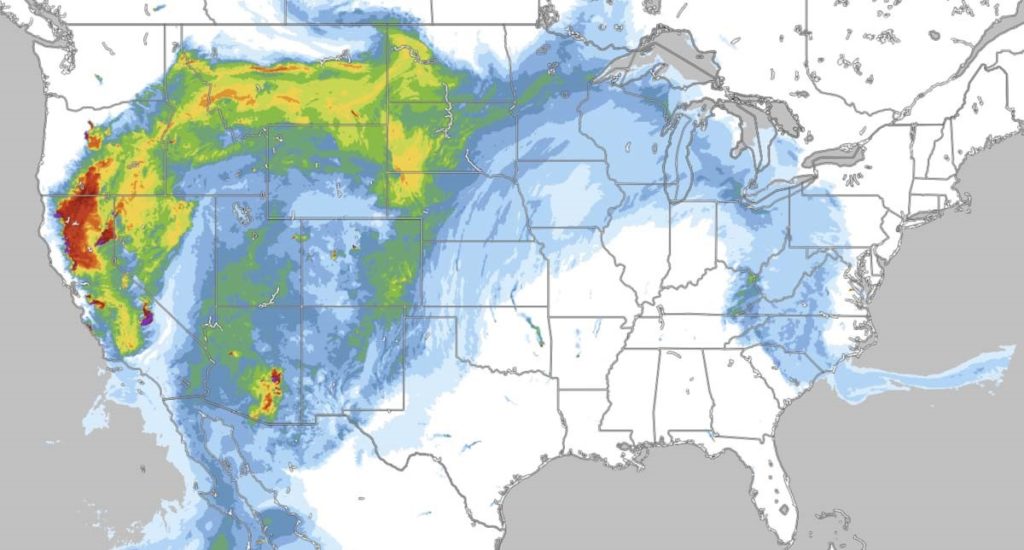
New York City, the bustling hub of dreams and skyscrapers, recently grappled with an environmental nightmare. An unexpected enemy, smoke from Canada’s relentless wildfires, cast a dense, ominous shadow over the metropolis, shrouding its iconic skyline and putting millions at risk.

A map of the United States highlighting air quality alerts across the Eastern U.S.
On June 7th, 2023, a colossal smoke cloud from Quebec’s raging wildfires swept over the eastern United States, issuing air quality alerts to over 75 million people. The usually vibrant New York City streets were reduced to a ghost town, with children confined indoors, flights grounded, and the entire populace teetering on the brink of a health crisis.
An Unhealthy Record
According to IQAir, a Swiss air quality technology company, the New York City Air Quality Index hit a worrying 160 during this period, second only to Delhi – a notorious global hotspot for air pollution. A thick, orange curtain of smoke, a devastating byproduct of the wildfires ravaging Quebec, Canada, had obscured the city’s iconic landmarks, including the towering high-rises and the Statue of Liberty.
The Canadian Inferno

Fires raging across Canada
This unprecedented crisis was driven by dozens of wildfires, driven by a potent mix of nature and human activity. Weather Channel meteorologist Stephanie Abrams revealed a staggering statistic: “The relentless wildfires have consumed 9.3 million acres across Canada.” That’s roughly the size of South Carolina, reduced to ashes.

A lightning strike starting a forest fire
Lightning, nature’s fire starter, ignited many of these fires powered by dry, hot weather conditions. Simultaneously, human-induced activities, from carelessly discarded cigarette butts to sparks from passing trains, continued to fuel the flames.
The Health Havoc
Dr Nidhi Kumar, a cardiovascular expert and CBS2 contributor, warned about the health risks of inhaling the smoky haze. The particles we breathe in are tiny, less than 2.5 micrometres, capable of penetrating deep into our lungs and bloodstream, causing irritation and inflammation. The current situation is potentially worse than smoking a cigarette due to high levels of pollutants, toxins, and carbon monoxide in the atmosphere.
The Smoky Future
Unfortunately, the forecast suggests more of the same, with the possibility of a smoke-filled summer looming ahead. A hot, dry spring triggered an early fire season, impacting air quality as early as May. If a significant cool and wet pattern doesn’t sweep across Canada soon, these fires could continue smouldering and sending smoke for weeks.
As we face the impacts of these environmental challenges, we are reminded of the fragility of our ecosystem and the looming threat of climate change.
And if you’re looking for even more valuable content, remember to check out our YouTube channel! https://youtu.be/igVEmcn-wvU Don’t miss out – hit that subscribe button now!
